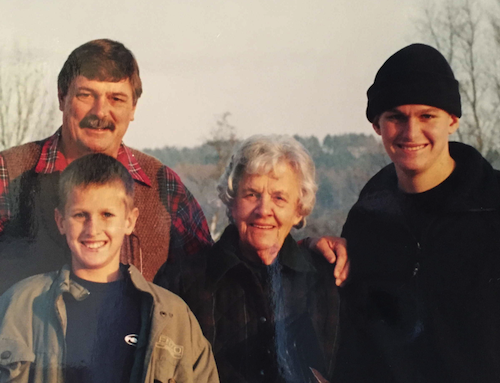 Cape Town in its early days clustered snugly around the slopes of Lion’s Head Mountain and Signal Hill, and only when overcrowding forced it did the White population begin to build homes on the slopes of Devil’s Peak.
Cape Town in its early days clustered snugly around the slopes of Lion’s Head Mountain and Signal Hill, and only when overcrowding forced it did the White population begin to build homes on the slopes of Devil’s Peak.
At the beginning of the nineteenth century, visitors to the Cape would complain of the insalubrious canals, once clear water-channels to the sea, which had become rubbish-filled and sluggish eyesores. The Capel Sloot was one; it reached Keisergracht (now Darling Street) near the spot now known as Castle Bridge, where a bridge crossed the Castle moat. To get to the area known today as District Six it was necessary to cross several of these canals, which explains the District’s old name: Kanaldorp.
In the 1860’s Cape Town began to rid itself of these canals and bridges. The stream which once ran down Adderley Street, for example, now flows beneath traffic-crowded macadam. It was a period of impoverishment and social distress. Streets were without lights because the civic authorities lacked finance, and it was suggested that the lamp-poles be removed to save people from colliding with them in the dark.
If lights were missing, so were street cleaners. The Press reported neglected courts and thoroughfares filled with rubbish. It is significant that, when District Six was named, in 1867, as one of the six municipal areas, parts of it were already overcrowded and dirt-strewn, conditions which were born in 1835, after the slaves had been emanci¬pated. More than 5,000 slaves, previously housed by their masters, were liberated, and most of them moved into dwellings previously occupied by Europeans-a reversion of housing which went on until recently.
In 1867 the police chief, Inspector John King, complained about Harrington Street and Glynn’s Square. “One of those horrid pest holes which cannot be exceeded by anything in Seven Dials or Petticoat Lane,” he snorted, and added that many premises were destitute of any convenience. A Cape Argus reporter, writing of conditions in Primrose Square, off Harrington Street, referred to “constant scenes of saturnalia”; to “prostitutes and thieves of the worst description, while of drainage there is none; of water not a drop”. It was not surprising when, eight years later, a typhus epidemic broke out in this unsavoury area.
None the less, District Six has always had its solid core of law-abiding citizens, both White and non-White. During most of the nineteenth century and up to the ‘twenties of this century, the area round Caledon and Constitution streets was a respectable suburban locality, and many of Cape Town’s rapidly increasing European middle class built modest homes there, to be within easy reach of the city. On nearby fields and farmlands, merchants and officials also built houses, mostly two-storied, and terraced in typical Victorian style.
theoriginsofdistrictsix_01It was then the custom to give numbers to the various Cape Town districts. Plates bearing these numbers were fixed at appropriate points on walls or light-standards. District Six is the only one to be left with a number and not a name, but of all the areas of Cape Town this is the one best-known throughout the world-wherever sailors, soldiers and the more venturesome globe-trotters meet. In the 1940’s one of the numbered plates was still to be seen on the wall of a building in Buitenkant Street, near the old Caledon Square Customs House.
Respectable and respected citizens were pleased to live in this area, so convenient to the city. Within living memory Constitution Hill, which ran up the slopes of Devil’s Peak from Harrington Street, was a good residential area where lived a number of prominent Capetonians – including two of the city’s mayors, and several members of parliament.
In 1861, the cosmopolitan character of District Six was already notable. Its Coloured and Malay inhabitants lived, for the most part, on the upper reaches of the District, beyond Tennant Street, while the lower parts were mainly European pre-serves. A Frenchman writing in The Monthly Magazine of that year, describes the suburb and observes:
Eastward up Caledon Street and its parallels towards Zonnebloem, you pass through an entire settlement in which the brogue of the Emerald Isle, the Doric of the North Briton and the “language of Cockaigne” have utterly supplanted and rooted out the patois Dutch.
It is a rambling, untidy locality. The houses and streets have a newly settled appearance; and the prevailing idea suggested is that of a busy, striving, energetic population having thrown themselves upon the soil, converted into bricks all but a small portion of it, and built houses of every shape and kind on the narrow remainder. Of streets there cannot be accurately said to be any; drains there are positively none, unless it be allowable to regard the whole surface of the earth in that light.
It is emphatically the quarters of English immigrants too busy and too much in a hurry just now to think of anything beyond working and building, to which they devote themselves with feverish energy, but with little system or order, while a feeble and paralysed local government is powerless to enforce the most ordinary regulations necessary for the well-being of a rapidly-growing town.
District Six – until the building of De Waal Drive after World War I – was an isolated area through which beautiful streams flowed. Their courses have been filled-in today, or covered over and led to the sea through tunnels. In years gone by the waters of these streams were used by Malay washer-women who stretched their washing on the rocks to dry. At the turn of the century the Mother City’s population was swollen by an influx of refugees from the Transvaal, on the outbreak of the South African War. Then came great building activity in District Six. The old two-storey buildings and flat-roofed houses with stoeps in Caledon Street, Hanover Street and Constitution Hill gave way to two- and three-storey blocks of flats built in a curious variety of architectural styles, with urns, gargoyles, faces of comedy and tragedy, scroll-gables, and ornamental balconies. Ventilators on the roof of one building simulated knightly helmets, while its tower had a scaled roof, like medieval chain armour. Time and again the Star of David was part of the ornamentation. These decorations remain today on many buildings, which have lost their original spruceness, but still retain a vagrant charm.
 On 31 January 1901, bubonic plague broke out in Cape Town, to rage for more than a year and cause widespread mortality. In March of that year, Sir Thomas Graham, the Plague Director, ordered that many slum structures in District Six be demolished. People were ordered to leave within hours, and dwelling after dwelling came down in the campaign to eliminate rodent-hosts of the fleas causing the plague. The evacuated people were placed in camps near what is now known as Pinelands, on the Cape Flats.
On 31 January 1901, bubonic plague broke out in Cape Town, to rage for more than a year and cause widespread mortality. In March of that year, Sir Thomas Graham, the Plague Director, ordered that many slum structures in District Six be demolished. People were ordered to leave within hours, and dwelling after dwelling came down in the campaign to eliminate rodent-hosts of the fleas causing the plague. The evacuated people were placed in camps near what is now known as Pinelands, on the Cape Flats.
As time passed, however, other buildings were erected on the sites of the old, and more people arrived to work in the docks, the market, and on the railways. The tene¬ments of the White refugees were vacated and non-Whites took over. Europeans now moved in large numbers from District Six, following the transfer of capital to the Rand, where large industrial projects were afoot, and unemployment became rife in Cape Town after the boom period of the war.
The position became so serious that Coloured unemployed set out on what was known rather oddly, as the “Unemployed Strikers’ March”. This started in District Six. Shops were broken into and desperate and hungry people helped themselves to foodstuffs and to whatever goods they could lay their hands on.
One section of the White population which did not move in any appreciable numbers till the early 1920’s was the Jewish community, which has left its very individual mark on the character of the area. A Hebrew school and a synagogue were situated in Constitution Street, and a large building in Chapel Street housed aged Jews. These orthodox residents, on their Sabbath, called on the children of the neighbourhood to light their paraffin-stoves and to make purchases at a popular general store standing at the corner of Selkirk and Sydney streets and known simply, as “Rhodes”.
District Six is essentially historical Cape Town. Already much of its character has been lost by demolition necessitated by the building of the Eastern Boulevard. The slum clearance programme of the Cape Town City Council has also relieved much congestion, and thousands of people who had their roots deep in the District have, in recent years, been re-housed, on the Cape Flats, in areas such as Bonteheuwel, Heideveld and Lavistown. (Bishoplavis)
For at least a quarter of a century there has been talk that this cosmopolitan area would disappear in a new Cape Town. One anonymous prophet of 1940 wrote in a non-White newspaper:
Alas poor District Six! They are planning your downfall. They wish to make an end to the live, throbbing area. They are making Darling Street a dagger pointed straight at your heart. What will I find if, in another life, I re-visit the old district? Will it be an extended Darling Street opening up a glorious vista of Devil’s Peak? Will sleek cars roll up and down a road flanked by select private flats like those on De Waal Drive; will White residences spread abroad interspersed with imposing commercial houses and factories?Will the Hanover Street municipal wash houses become a sub-station, the Hyman Liberman Institute an exclusive lecture room, and the new Trafalgar Park swimming bath-duly disinfected-a White resort?
And if I should inquire of a wayfarer what had become of those Coloured people of District Six who were as truly a part of the city as is Table Mountain, he would reply: “Oh, they take a train to Mowbray and then a bus to the Cape Flats …”
District Six needs no prophet now to foretell its fate. The die has been cast. Its death is certain. And its end will deprive the Mother City of a richness and warmth that most cities in South Africa, and the world in general, so sorely need.
Source: Longmans District Six: Franck-Manuel-Hatfield
Picture: Standard Encyclopedia of Southern Africa (SESA)





